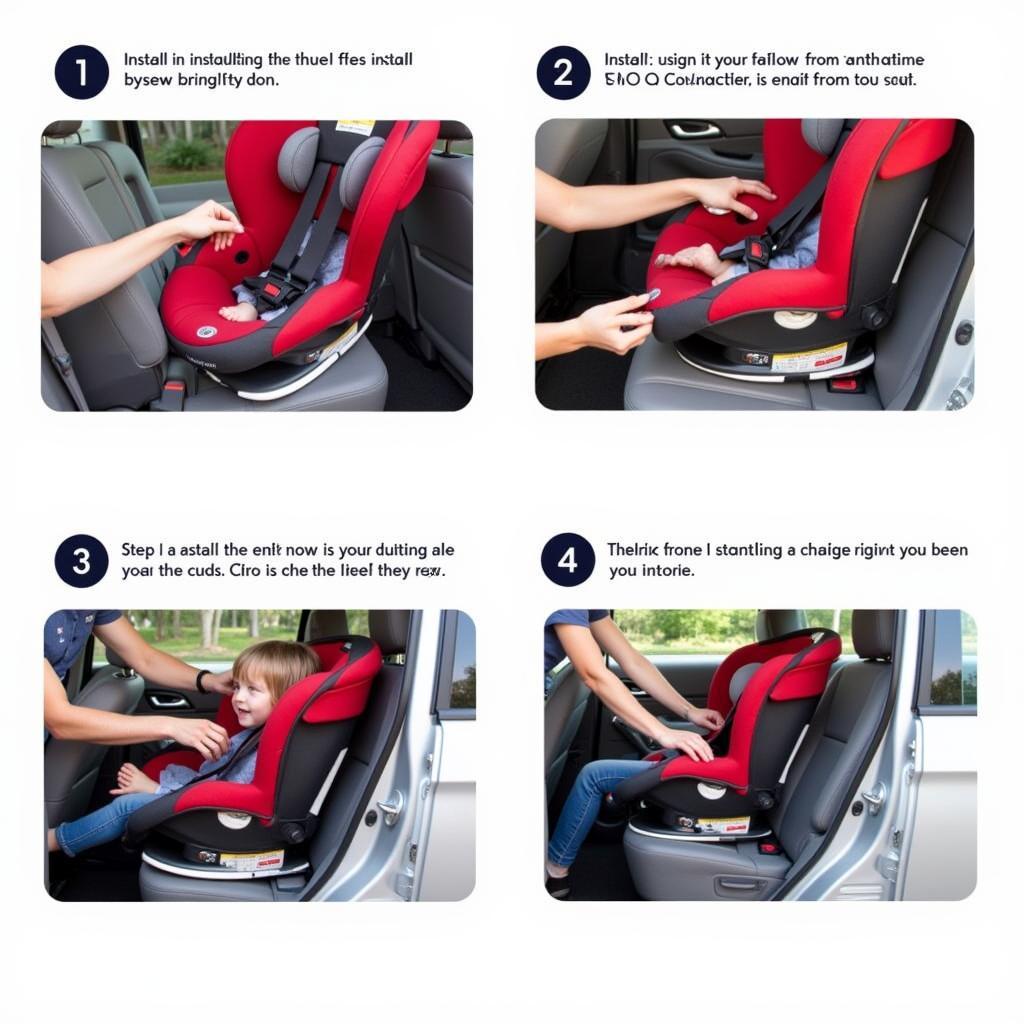A “Problem With The Clown Car” typically refers to issues stemming from overloading a vehicle, much like how clowns seemingly pack countless individuals into their tiny cars. This can range from simple annoyances like reduced fuel efficiency to serious safety hazards like brake failure. Understanding these potential problems is crucial for both everyday drivers and professional mechanics. Let’s dive into the common issues associated with overloading a vehicle and how to address them.
Understanding the Impact of Overloading
Overloading puts undue stress on various vehicle components. One of the first things to suffer is your fuel economy. The engine has to work much harder to move the extra weight, leading to increased fuel consumption. Think of it like trying to run a marathon with a backpack full of bricks; you’ll tire out much faster.
Tire Trouble
Your tires bear the brunt of the load. Overloading causes excessive tire wear, increasing the risk of blowouts, especially at high speeds. Underinflated tires exacerbate this problem, leading to uneven wear and reduced tire lifespan. Regularly checking tire pressure and ensuring they are properly inflated for the load being carried is essential.
Suspension Sorrows
Your vehicle’s suspension system, designed to provide a smooth ride, also takes a beating when overloaded. Over time, this can lead to premature wear and tear of shocks, struts, and springs, ultimately compromising handling and ride comfort. Imagine a trampoline constantly overloaded; it loses its bounce and can eventually break. Similarly, an overloaded vehicle’s suspension can sag and lose its responsiveness.
How to Identify and Address the “Clown Car” Problem
Identifying an overload problem is often quite straightforward. If your vehicle feels sluggish, bottoms out easily, or the tires look unusually compressed, you may be carrying too much weight. Refer to your owner’s manual for the vehicle’s maximum load capacity. This is crucial information for safe and efficient operation.
Checking Your Vehicle’s Load Capacity
Locating your vehicle’s maximum load capacity is easy. Check the sticker on the driver’s side doorjamb. This sticker provides essential information, including tire pressure recommendations and the gross vehicle weight rating (GVWR). The GVWR represents the maximum allowable combined weight of the vehicle, passengers, and cargo. Exceeding this limit is dangerous and can lead to serious problems.
Preventing Overloading: Smart Packing Strategies
“Overloading isn’t just about how much you carry, but also how you distribute it,” says automotive expert, Dr. Emily Carter, PhD in Mechanical Engineering. “Proper weight distribution is vital for maintaining vehicle stability and handling.” Distribute the load evenly throughout the vehicle, avoiding concentrating weight in one area. This helps maintain balance and reduces strain on specific components.
big homer small car big man problem cartoon
Regular Maintenance is Key
Routine maintenance is crucial for identifying potential problems early on. Regular inspections by a qualified mechanic can help detect wear and tear on suspension components and other systems affected by overloading. “Consistent maintenance can save you money and headaches in the long run,” advises master mechanic, Richard Hayes, with over 20 years of experience. “Catching issues early can prevent minor problems from becoming major repairs.”
Conclusion: Avoid the “Problem with the Clown Car”
Addressing the “problem with the clown car” – essentially overloading – is crucial for both safety and vehicle longevity. By understanding the potential issues, regularly checking your vehicle’s load capacity, and adopting smart packing strategies, you can avoid the pitfalls of overloading and keep your vehicle running smoothly. big homer small car big man problem cartoon For further assistance or expert advice, connect with us at AutoTipPro. You can reach us at +1 (641) 206-8880 or visit our office at 500 N St Mary’s St, San Antonio, TX 78205, United States. We’re here to help!





Leave a Reply